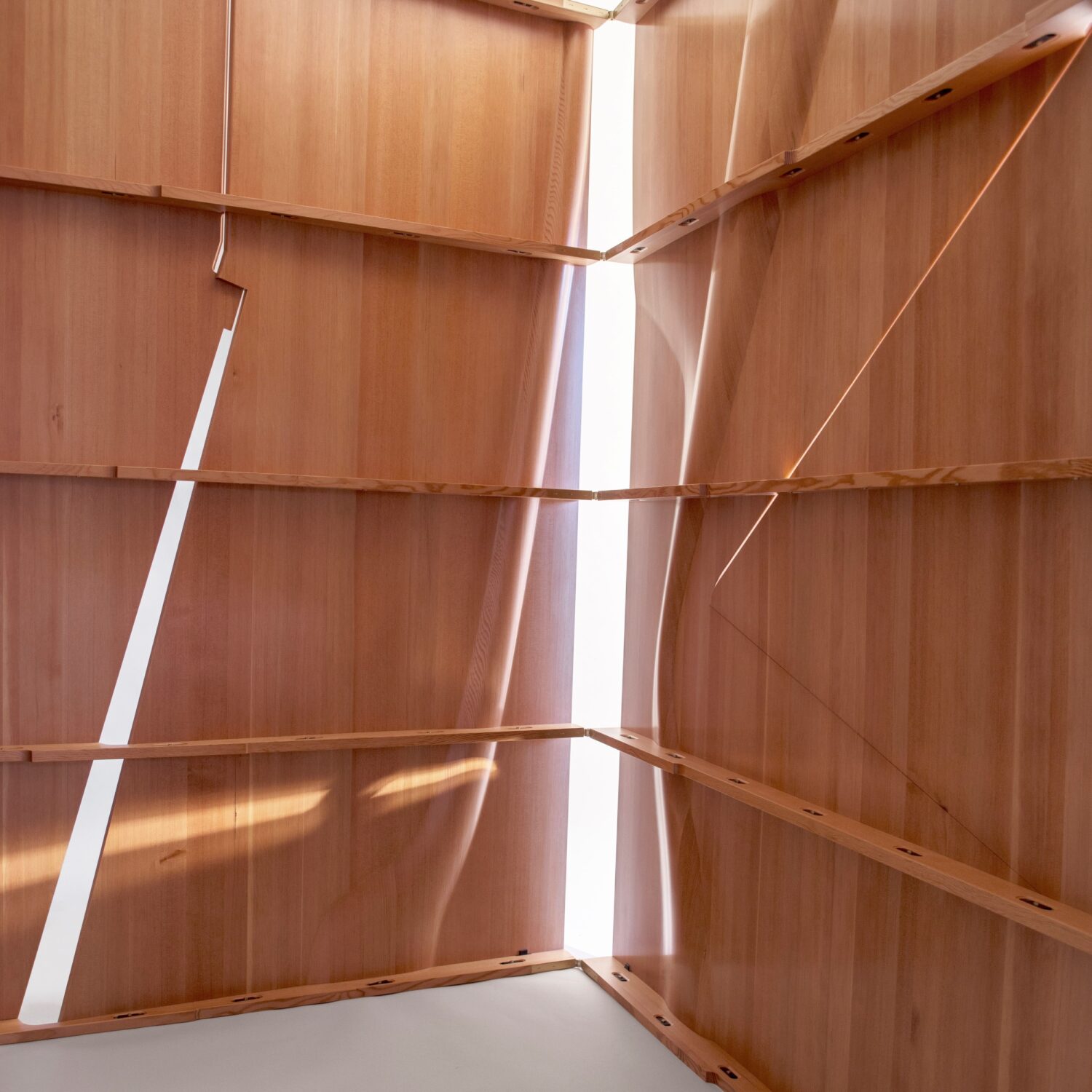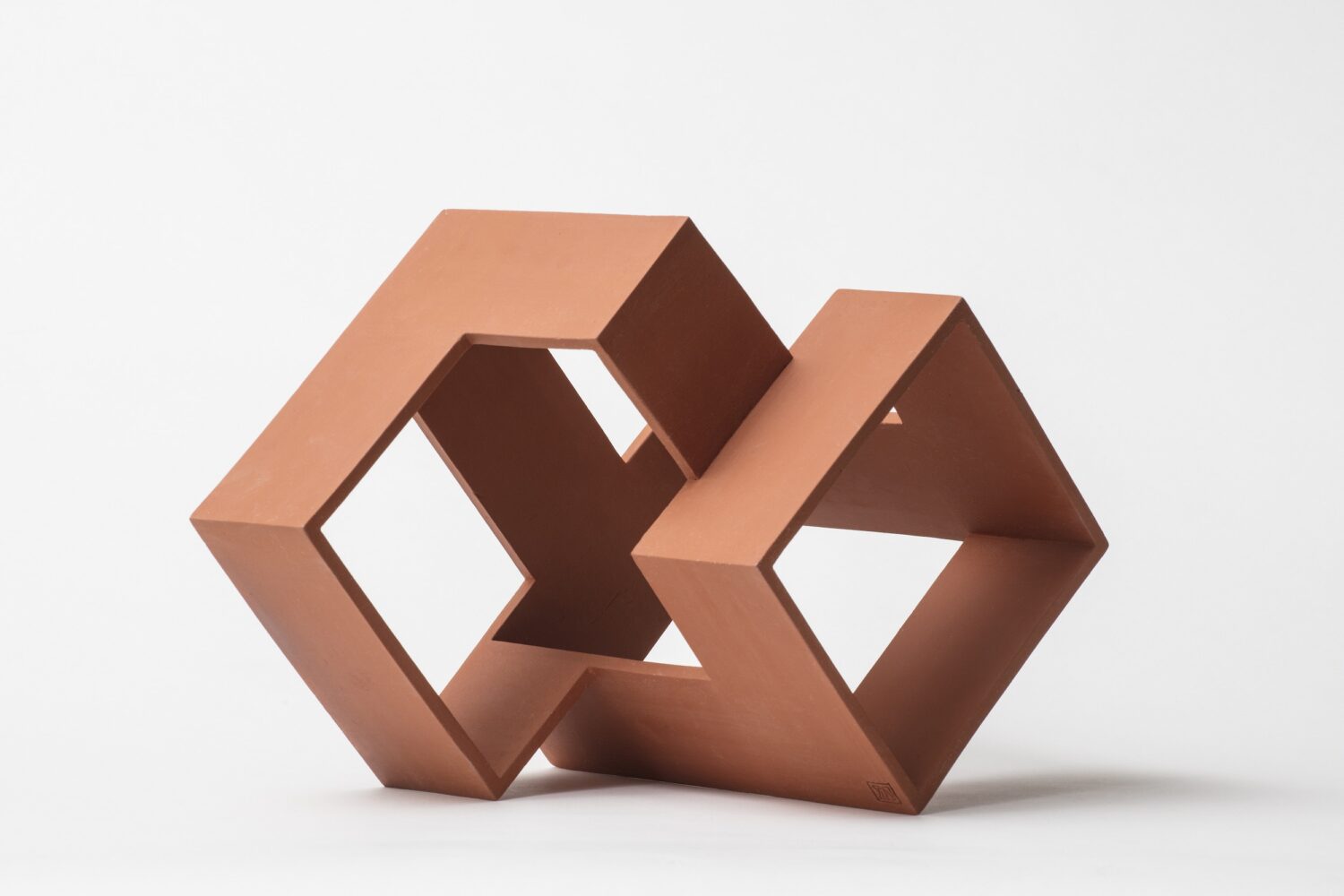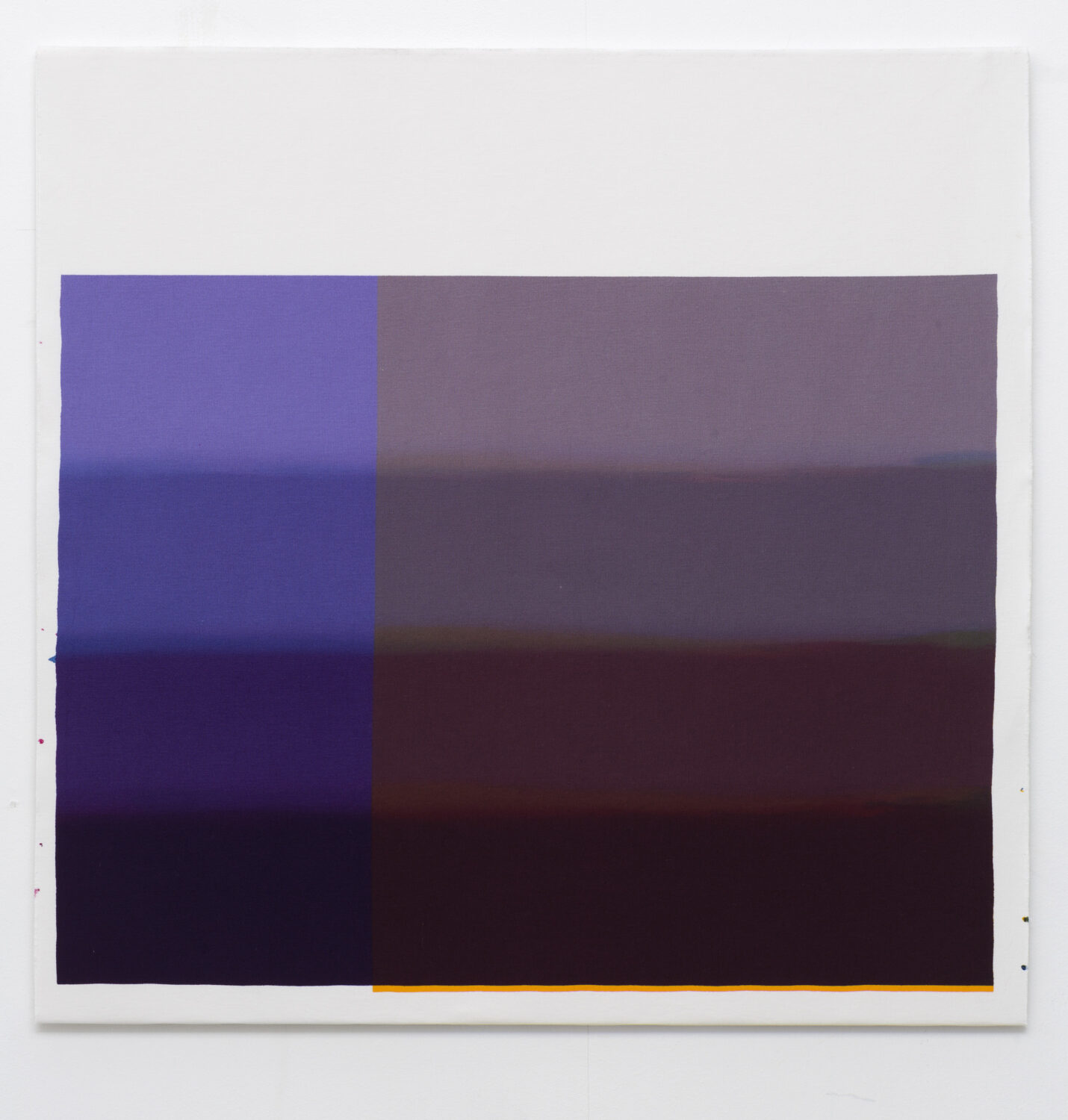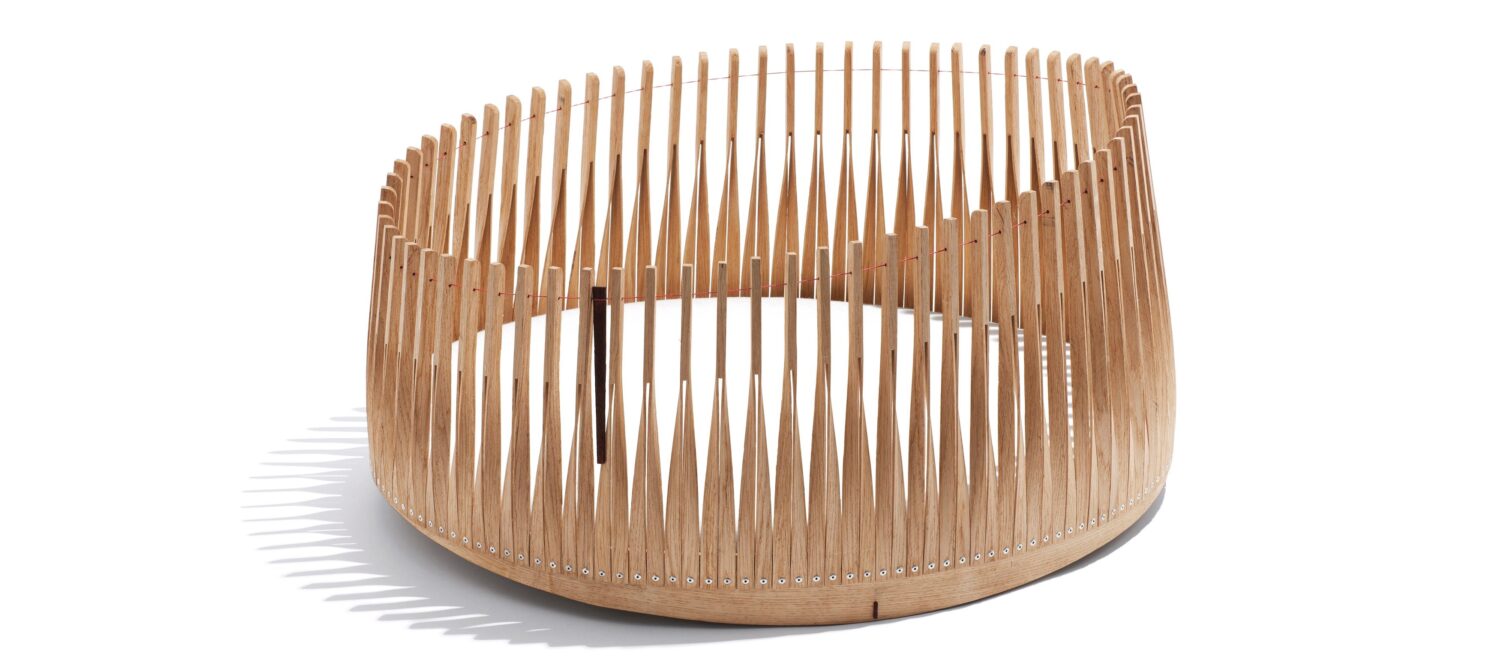Works by: Eske Rex, Lasse Folke, Ane Lykke, Manuel Canu, Mette Ussing, Frederik Gustav, Mette Marie Ørsted, Kasper Kjeldgaard, Erik Krogh, Louise Sass.
COMMON GROUND is the second exhibition that the exhibition space has shown, and including the first exhibition WUNDERKAMMER with works by Jacob Sebastian Bang, it sets the stage for a future ambitious exchange between many different professions within architecture, art, crafts, and design, exploring our common physical reality.
The exhibition space was established in a collaboration between architect David Bülow and designer/architect Else-Rikke Bruun. It is artist-driven, or perhaps rather designer/architect-driven, and insists on an independent approach in relation to the usual commercial interests associated with a gallery. The economy is therefore not controlling in the curatorial choices, creating a freedom that is normally a privilege reserved for museums.
Facts
The exhibition Common Ground is on show from 27 th of April – 11th of June 2023.
til:værks Livjægergade 28 2100 Copenhagen
Seductive immersion
It is natural to immerse oneself in the eight works as individual materializations that process a particular phenomenon. It is also tempting, as all the works, for most design aficionados, are seductive in form, material, function, and non-function. They all stand precise, aesthetically sovereign, and uncompromising in their own existence… and one feels like immersing oneself.
But the works in the exhibition also melt together in a poetic way and are filled with cross-references to each other in a sonorous symbiosis of beat, rhythm, space, repetition, refractions, dynamics, and organic surprise.
When our eye hits the objects around us, we sense them based on our own starting point, and we use both our intuitive sensory apparatus and learned knowledge to analyze and concretize them. There is therefore a big difference in the associations that arise when you and I look at the works.

The music of the works
I hear music in works that are silent to others, and I see daylight filtered through the works and transformed into a coherent, musical work that touches other senses than just the visual. Mette Ussing’s Changing stick sculpture and Aske Rex’s Little Ship are fine examples of this. The works play beautifully together, with their repetitive structures that filter light, and where there is a transparency that also conveys the negative space, the air that exists between the structures’ lamellas.
Torben Krogh’s Kubus from 1981 stands as a strong contrast, a small compact monolith from another time, created from a completely different pragmatic mindset where it is not the structure itself that creates the repetition, but the furniture’s additive properties. In an applause to the furniture and Torben Krogh, I allow myself to quote several of his students from the Danish Design School: “When we design, we should also do it so that it can be felt that we are alive”.
The way the exhibition is arranged is probably dictated by the physical boundaries of the exhibition space, and not everything is equally harmonious. Manuel Canu’s work seems a bit cramped in close proximity to Lasse Folke’s wall. Louise Sass’s Cloud Nine hangs in backlight, so one doesn’t get as much joy from the work as if it had daylight with it.
But that’s how music can be too, with harmonies and dissonances that can both be enjoyed and scratch a bit, but at the same time uplift and enrich. In fact, I could use a few more deliberate disharmonies and contrasts that put it all a bit more on edge.
The materials of all the works are predominantly wood, clay, and paper, resulting in understated, natural colors in nearby shades. Only Louise Sass’s work is decidedly color-saturated, but it is hung in a way that doesn’t convey the full potential of its colors and overlays.

Strong Recurrences The very well-versed design aficionados may also recognize several of the works, as they have previously been included in the Danish Arts Foundation’s long-standing initiative Mindcraft, Snedkernes Efterårsudstilling, the Biennale for Crafts and Design, or other exhibition contexts.
Eske Rex’s work “Little Ship” was part of Mindcraft 2013. Eske Rex’s compositions are based on himself and the balance between strength and vulnerability. “Little Ship” was created from the desire to build a cradle for one of his own children and is a safe frame for a little new life. Like an instrument, the construction can be tensioned, so that strength and shape can be fine-tuned.
Lasse Folke is a wonderfully searching soul who, in his impressive work “Wall,” explores how the unstructured morphology of nature can be used as an aesthetic tool for progressive architecture. Carpentry craftsmanship at a high level that can hardly be experienced without being touched.
Ane Lykke participates with a variation of her beautiful light sculptures in a downsized version. Ane Lykke is a master at creating poetic connections between viewer and object and is also currently featured at Denmark’s Design Museum with the Kurenai Light Object, based on the same concept on a larger scale, which was also part of Mindcraft 19.
Manuel Canu uses his autonomous and site-specific working method in his ephemeral sculpture, which reinterprets clay as a material and challenges gravity. It stands as a present, modeled manifesto with references to historical, classical architectural ornamentation and feels like a warm summer breeze. Manuel Canu has previously used this methodical approach in the work on Plads #1, which was part of the Biennale for Crafts & Design in 2013 and in a work for the exhibition: Nature. Traces & Reflections at Clay Museum, 2021/22.
Mette Ussing demonstrates in an exemplary manner her ability to fantasize and create abstract intersections between her artistic starting point and imagery from architecture. Her Changeable Stick Sculpture is a beautiful example of her playful and generous approach. The sculpture was first shown at Charlottenborg in 1996 and has subsequently been included in several exhibitions.
Frederik Gustav (Frederik and Gustav) has created a delicately proportioned composition for the exhibition that incorporates light and is a variation of a work they participated with in Mindcraft 2022. Paper Work is based on a generic system that can be scaled and modified infinitely. A combination of weighted wire spins and weaves together, and the translucent paper filters light, both from within and outside, in a wonderful way.
Mette Marie Ørsted’s ceramic studies New Concretions make me think of the legendary graphic artist M.C. Escher’s floating spatial fantasies in minimalist versions that similarly explore progressions, spatiality, and transitions. In the new works, Mette Marie Ørsted has simplified and refined previous works to such an extent that they now appear as spherical icons, minimized to the absolute essentials.
Kasper Kjeldgaard finds himself in a tension field between concretism and metaphysics. His light object Suspense is both a physical and a transcendent poetic lamp, a sculptural configuration that spans between ceiling and floor. The construction is composed of brass tubes and an electrical wiring component that forms a running line, defining the composition. Suspense was part of Mindcraft 2021.
“The Chair in the Space – The Space in the Chair” is the title of a lecture by designer and teacher Erik Krogh, in which characteristic types of chairs are evaluated. Erik Krogh participates in the exhibition with the work Kubus from 1981, which is a beautiful example of this statement. Quite simply, the furniture consists of five functional small stools assembled into a cluster, forming a complex sculptural architecture. A dynamic piece of furniture that, both assembled and separated, creates changing experiences in space.
In her work Cloud Nine, Louise Sass works with color and overprinting to translate impressions of landscape and atmospheric layers. Overprinting is when transparent colors are printed on fabric in overlapping layers, creating a symbiosis between color, motif, and material. The diffuse and blurred transitions create a dark third dimension, a deep color-saturated interaction. Louise Sass is a superb colorist and master of intense overprints.

Compositional complexity
The ambition of the exhibition space at til:værks is, among other things, to showcase meaningful works and create a professional community where artists can operate within a creative space. This is much needed, and it doesn’t take much effort to sense the interconnectedness between the works in COMMON GROUND, even for outsiders.
Perhaps a well-chosen piece of music could help guide the senses. I don’t think the underlying compositional complexity that characterizes the exhibition is immediately accessible to everyone. Maybe I’m wrong, or maybe it’s not even the intention.
It could also be that some of the most striking connections in the exhibition could be conveyed in a simple way, at least opening the door to the relationships that are hidden within the exhibition, and thus creating more curatorial accessibility.
A large part of COMMON GROUND’s high quality is the selection of works. It is convincing, and there is no doubt that there is great insight and care behind it. However, the exhibition holds much more that one must search for in order to understand.
It is meaningful to reuse existing works when they are of such high quality as those in COMMON GROUND. The works have a lot to say, and so does til:værks, so I look forward to seeing more. Thank you for enriching the industry and Copenhagen with this initiative!
Additional reading
Atmospheric layers in a human space
Receive a newsletter
Sign up for Formkraft’s newsletter and receive information about new articles as well as tips on relevant conferences and books. Sign up here.


